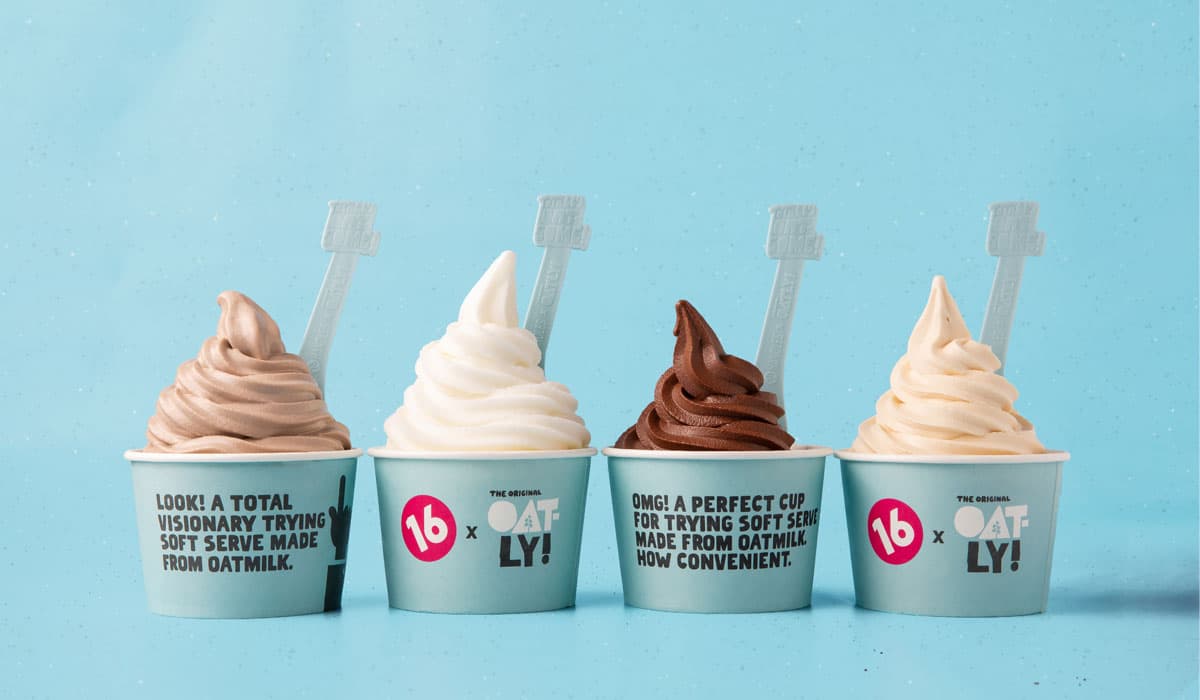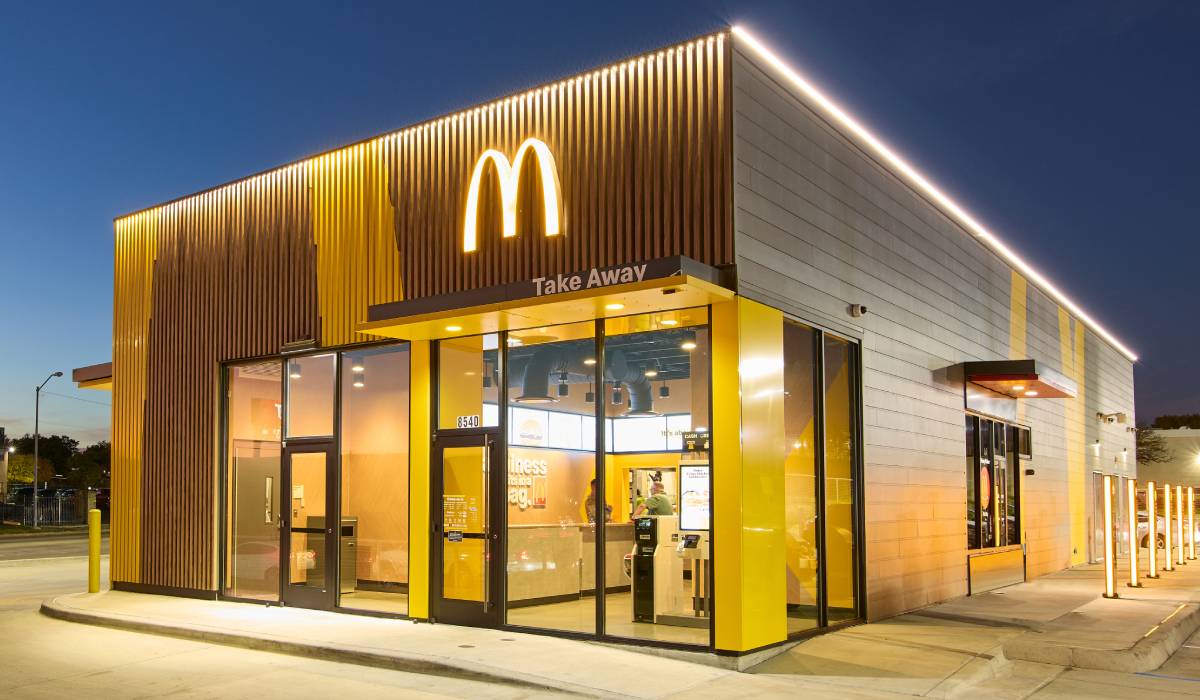Frozen yogurt shops are the millennial equivalent to the soda fountains that served as social hubs for teenage Baby Boomers. The frozen treat has gone through multiple popularity booms that seem to fizzle out after a few years, but leaders in the segment are reassuring customers—and potential franchise owners—that fro-yo is poised for a comeback, and is here to stay.
Though the origins of yogurt can be traced back thousands of years to the Middle East and India, the first commercial frozen yogurt wasn’t available in the U.S. until the early 1970s. “Frogurt,” as it was initially called, was sold only in scoops like ice cream and was more tart than sweet. Soft-serve frozen yogurt was invented in the 1980s, and quickly gained popularity for being the healthier alternative to sugary ice cream since fro-yo contains digestion-friendly probiotics.
The modern version of fro-yo shops—where customers customize their yogurt with a variety of different toppings like fruit, candy, pretzels, and syrups—started gaining traction in 2005 when Pinkberry opened its first store in West Hollywood, California, which has grown to about 260 franchises in 20 countries. Though Pinkberry touts itself as “the original frozen yogurt that reignited the category,” competitors quickly rose up to vie for a piece of the frozen treat market.
Yogurtland was among the first to offer the self-serve frozen yogurt bar with a variety of flavors available to customers at the pull of a handle. Yogurtland served its first cup of fro-yo in 2006 in Fullerton, California, and after 15 years has grown to nearly 300 locations across eight countries.
In September, same-store sales were up 27 percent versus 2021, with comp sales up around 30 percent from 2021, according to Yogurtland President Sam Yoon. And 80 percent of stores are outperforming 2019 sales, proving the brand is fully recovered from any pandemic lags, Yoon says.
Yogurtland didn’t reach success by accident. A purposeful, multi-tiered drive to stay relevant has enabled the brand to keep building momentum, Yoon says, plus better-for-you concepts are trending in franchised food and beverage concepts—”contrary to articles in the past that said frozen yogurt is dead,” he says.
While many attribute the explosion of health and wellness-focused brands to the pandemic spurring people to care more about their health, Yoon predicts better-for-you brands have more room to grow. “This trend will only grow stronger,” he says. “Frozen yogurt is healthier and contains probiotics that boost immune systems. Our frozen yogurt contains at least 10 million cultures at the time of manufacturing, and our flavors are developing around plant-based flavors our guests love, as well as sugar-free options.”
A focus and investment on using high-quality ingredients helps differentiate the brand from competitors in the space. An in-house team of “flavorologists,” as Yoon calls them, ensure customers are receiving the latest global and diverse mix of new flavors at Yogurtland.
The team has a rolling 18-month flavor development plan, and the innovation process—from ideation to formulation, testing, refinement, and rollout—takes about nine months. A flavor recipe will often undergo about 25 renditions before being released to the market, Yoon says.
Planning back-up solutions ahead of time for any supply chain challenges, plus developing strong relationships with vendor partners, allows the brand to continue meeting the expectations of their guests.
Strategic partnerships are key for any brand trying to stay relevant. Yogurtland, for example, spiced things up in 2019 when it teamed up with Cheetos Flamin’ Hot to offer a new topping for a “sweet and spicy combination,” which paired with a special kickoff event at a California mall where fans could meet Chester Cheetah. Yogurtland also collaborated with Sour Patch Kids in August to launch a limited-time Watermelon Sorbet frozen yogurt, marketed as “the perfect back-to-school treat.”
The purpose? “Creating that buzz and excitement, and bringing fans of those brands and exciting our customers to come into our stores,” Yoon says. “At the same time, it’s an opportunity for our flavorologists to use this occasion to craft amazing, creative, new frozen yogurt flavors.”
While Yogurtland creates its own vegan flavors using an oat milk base, such as Plant-Based Brown Sugar Vanilla, New York-based fro-yo shop 16 Handles has an exclusive partnership with big-name oatmilk brand, Oatly—which means non-dairy flavors like Marshmallow and S’mores flavors in the summer and pumpkin spice in the fall.
16 Handles—named for having 16 rotating soft-serve flavors—was founded in 2008 by Solomon Choi in Manhattan’s East Village, and has since grown to 30 stores across five states. The company claims to be the first self-serve frozen yogurt shop in New York City, and sets itself apart with a modern store design, exclusive product lineups, and integrating mobile app-based loyalty and ordering technology.
16 Handles was recently acquired by its largest franchisee, Neil Hershman, and investor Danny Duncan, who boasts nearly 7 million YouTube subscribers. At 27 years old, Hershman is now CEO of 16 Handles and has built an $8 million dessert portfolio, including seven 16 Handles and other treat franchise stores such as Dippin’ Dots/Doc Popcorn and Captain Cookie & The Milkman.
Hershman and Duncan plan to grow 16 Handles beyond the Tri-State market via franchising—despite talk of the concept being a dying fad. “I think those articles are really funny. If it’s just a trend, why have we been writing about it for 20 years?” Hershman says.
“At some point it gets a lot of media and people think it’s really popular, and then stops getting so much media because of the media cycle, but stores stay as is,” he adds. “A lot of stores at 16 Handles comp up every year. People say fro-yo is dying, but yet we have more customers coming in and more loyal customers returning. It’s just not true.”
Since Gen Z is a target demographic for 16 Handles, the ownership duo will leverage Duncan’s audience—70 percent of which ranges between ages 18 and 34—to generate more buzz. “He’s been a big help in figuring out how to target that audience, because if you win it, they’ll come in with their families as well. It’s a great sell,” Hershman says.
On the franchise sales side, Hershman is targeting multi-unit operators by selling discounted packs of three stores, and noted the brand is focusing on markets in Florida and Texas next. The self-serve model saves money on labor costs, and rising average unit volumes with a 550-1,200 square footprint helps attract new owners.
Plus, improved technology lessens the burden on franchisees finding real estate. Historically, fro-yo shops used to be less desirable since they required water lines, high-voltage electricity, and other customization for the frozen yogurt machines. “Tech has caught up, and having direct-drive machines is going to be much more efficient,” he says, so franchisees can build in any space.
So while many trends tend to be cyclical, the healthier ice cream alternative looks like it’s here to stay—at least, from Yoon’s and Hershman’s perspective.
“Millennials love the brand in New York, so we’ll keep playing to that,” Hershman adds. “For them, they grew up with frozen yogurt always being available, so to have a cool, clean kind of modern, sleek store to go to that sells frozen yogurt, versus kind of a dingy local shop, is a nice benefit.”









